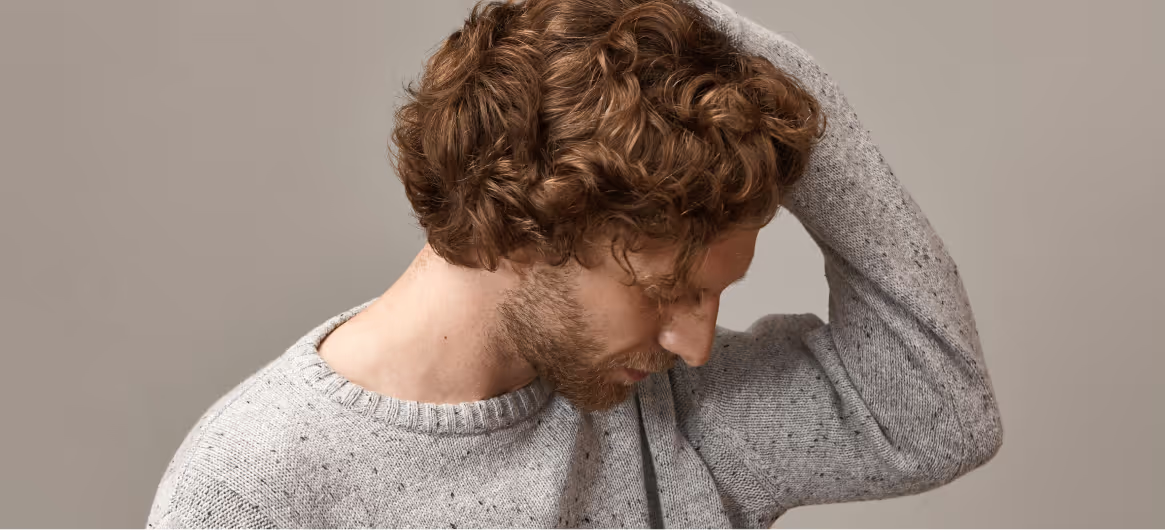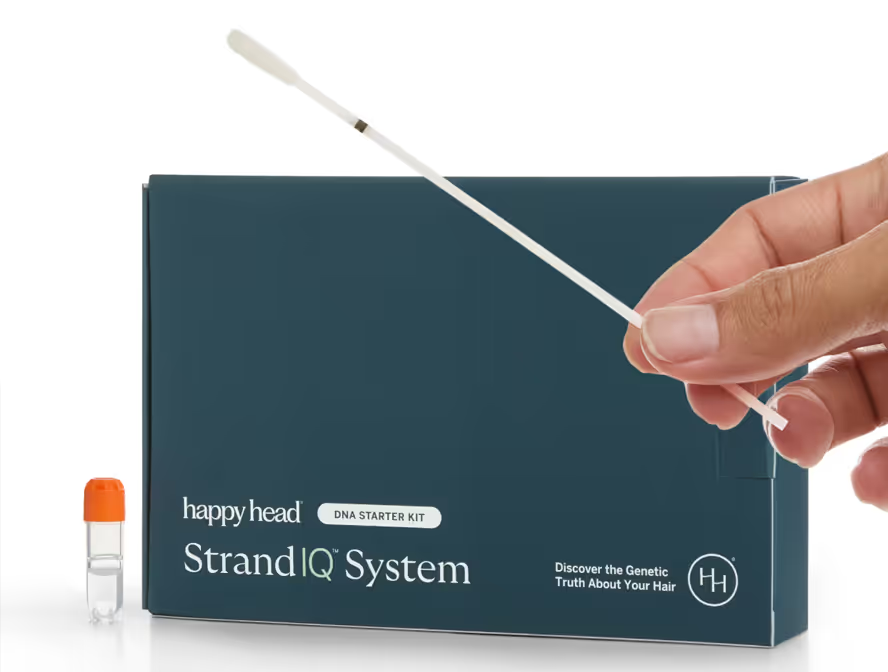Hair thickness plays a central role in how your hair looks, feels, and responds to different styles or treatments. It’s defined by the diameter of each individual strand—not to be confused with hair density, which refers to how many follicles are on your scalp.
Whether your strands are naturally fine, medium, or coarse, your hair thickness is shaped largely by genetics. But lifestyle habits, product choices, and environmental exposures can also influence how thick your hair feels or appears. Understanding where you fall on the spectrum can help guide more effective styling decisions and better long-term care.
What Influences Hair Thickness?
Hair thickness is shaped by a combination of genetic and external factors. While your DNA sets the foundation, daily habits and environmental exposure also play a major role in how thick—or thin—your hair appears over time.
Genetic Factors
Variants in genes associated with hair structure and keratin production can impact strand thickness and texture. These differences help determine whether your strands are naturally fine or thick and how they respond to stress, heat, and chemicals.
Specific genetic variants—such as the EDAR, FGFR2, and TCHH genes—influence how much keratin is produced and how it’s integrated into each strand. Knowing your genetic blueprint can help you choose more effective haircare products and styling techniques tailored to your biology.
For those with fine or thinning hair, understanding your genetic predisposition allows you to approach care proactively—whether that’s with custom formulations, strategic trimming, or avoiding practices that compromise your strands' structural integrity.
Environmental and Lifestyle Factors
While genetics play a key role in determining your hair’s natural thickness, environmental exposures and daily habits can either support or compromise strand strength over time. A few of these factors include:
- Overwashing can strip natural oils, weakening strands over time
- Heavy products may weigh down fine hair and reduce volume
- Heat styling can damage the outer cuticle, especially in thinner hair types
- Nutritional deficiencies (such as iron or protein) can lead to hair thinning over time
Personalized Hair Thickness Recommendations
Low Risk: Everyday Hair Thickness Tips for Naturally Thick Strands
If your Happy Head StrandIQ™ analysis has identified you as being at low risk for hair thickness concerns, you likely have resilient hair. To maximize your hair’s potential, consider implementing the following tweaks to help enhance volume and maintain strand strength:
- Weightless volume
Use oil-free styling products like sprays or mousses to lift roots without adding residue or heaviness. - Wash mindfully
Avoid overwashing as it will strip your scalp of the natural oils that help maintain strength and thickness. - Light conditioning
Too much conditioner can make hair appear flat. Instead, opt for lightweight formulas or limit conditioner use to only the mid-lengths and ends of your hair.
Medium Risk: Strengthening and Volumizing Strategies
If you’ve been identified as being at medium risk for hair thickness concerns, you may experience some fluctuations in strand thickness. If low risk measures haven’t helped, consider stepping up your hair care routine:
- Style smarter
Try layered cuts to create the illusion of more volume and movement in thinner hair types. - Practice gentle drying
When blow-drying your hair, opt for cooler heat settings to avoid damaging fine strands. - Volumizing support
Incorporate oil-free styling products to enhance natural lift and body without buildup. - Strategic washing
Washing less frequently—once or twice per week—allows your scalp to replenish natural oils that support strand structure.
Advanced Care for Naturally Thin Hair: High Risk Thickness Solutions
If your StrandIQ analysis shows a genetic predisposition for finer or more fragile strands—or you’ve noticed significant thinning—a more proactive and personalized approach may help preserve and enhance volume over time.
- Seek professional guidance
Work with a Happy Head dermatologist to assess for underlying causes like hormonal imbalances, nutritional deficiencies, or scalp conditions. - Explore topical prescription-based options with a licensed provider
Ask your Happy Head dermatologist or Care Manager about clinically backed solutions such as minoxidil or prescription-based topical formulas that may stimulate hair thickness and regrowth. - Support growth through diet
Focus on foods rich in biotin, iron, zinc, and omega-3 fatty acids—all essential nutrients that support hair shaft development and strength. - Reduce physical stress on hair
Limit tight hairstyles, excessive brushing, and chemical processing that can damage fragile strands. Opt for satin pillowcases and wide-tooth combs. - Consider a custom hair care solution
Consult with a board-certified dermatologist to build a personalized hair routine tailored to your genetic profile, hair goals, and risk factors—a smart route for those managing more advanced thinning.
Your Hair Thickness Game Plan
Whether your strands are fine and wispy or full and coarse, the right approach can bring out their best. At Happy Head, we believe that hair care should be personalized—not just based on trends or hair types, but on your unique genetic and environmental makeup.
Our custom treatments and recommendations are designed to work with your natural biology to protect strand structure, support hair health, and preserve the volume that suits your style. No matter where you fall on the thickness spectrum, we’re here to support every strand.
Resources
StrandIQ SNP Marker Count: 2
StrandIQ Genes for Trait:
EDAR, FGFR2
References:
Adhikari, K., et al. (2016). A genome-wide association scan in admixed Latin Americans identifies loci influencing facial and scalp hair features. Nature Communications, 7, 10815. PMID: 26926045.
Fujimoto, A., et al. (2008). A replication study confirmed the EDAR gene to be a major contributor to population differentiation regarding head hair thickness in Asia. Human Genetics, 124(2), 179–185. PMID: 18704500.
Fujimoto, A., et al. (2008). A scan for genetic determinants of human hair morphology: EDAR is associated with Asian hair thickness. Human Molecular Genetics, 17(6), 835–843. PMID: 18065779.
Medland, S.E., et al. (2009). Common variants in the trichohyalin gene are associated with straight hair in Europeans. American Journal of Human Genetics, 85(5), 750–755. PMID: 19896111.
Mou, C., et al. (2008). Enhanced ectodysplasin-A receptor (EDAR) signaling alters multiple fiber characteristics to produce the East Asian hair form. Human Mutation, 29(12), 1405–1411. PMID: 18561327.
Riddell, J., et al. (2020). Characterisation of a second gain of function EDAR variant, encoding EDAR380R, in East Asia. European Journal of Human Genetics, 28(12), 1694–1702. PMID: 32499598.
Shimomura, Y., Christiano, A.M. (2010). Biology and genetics of hair. Annual Review of Genomics and Human Genetics, 11, 109–132. PMID: 20590427.
This content, including StrandIQ™ DNA analysis reports and any Happy Head products and/or services referenced therein, is for informational and cosmetic purposes only. It is not intended to diagnose, treat, cure, or prevent any disease. This content does not constitute medical advice and should not be used to make healthcare decisions. References to prescription treatments are educational in nature. Always consult a licensed healthcare professional for any medical concerns or treatment decisions.








.avif)

